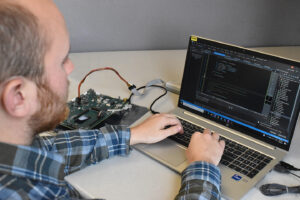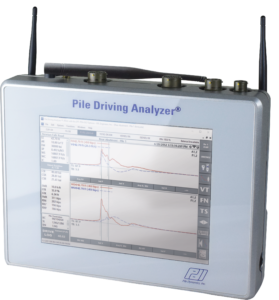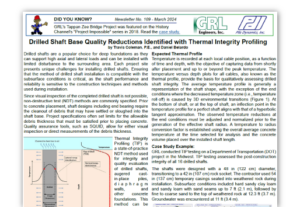What are the advantages / disadvantages of conducting Thermal Integrity Profiling (TIP™) with Thermal Wire® cables versus with a thermal probe?
Advantages of Thermal Wire cables:
Local defects (e.g. necking or inclusion) are best detected early in the curing process. Although, the optimum time for detection is initially unknown. First, engineers should attempt probe testing early in the curing process to look for potential local defects. Then, they should perform another test near the time of peak temperature for shape and cover evaluation. Thermal wire cables record the full temperature versus time history. Finally, engineers should scan the full record to determine the optimum time for local defect detection and the peak temperature for shape and cover evaluation.
The Thermal Wire cables option simplifies scheduling. Additionally, it can define the concrete’s maturation process (temperature vs time) and depth.
Generally, in the United States, the cost to install Thermal Wire cables is less than the cost to install access tubes. Often, shafts in the United States are cast with access tubes. This allows for engineers to eventually perform CSL testing on the shafts. Engineers, however, will only CSL test a portion of the shafts. This is in part due to the high costs associated with CSL testing. Comparatively, the installation of Thermal Wire cables minimizes the cost of data collection and the cost to inspect the thermal profiles (produce a temperature versus time plot). In short, engineers can inspect shafts with Thermal Wire cables for less than performing CSL testing.
Disadvantages of Thermal Wire cables:
The thermal probe is reusable. Additionally, engineers can use the standard access tubes if they were installed previously. The embedded sensors, however, are not reusable.
Return to FAQs



